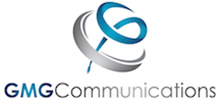Blog
Achieving Network Peace of Mind
By proactively monitoring and managing your Network infrastructure, you can avoid the hassles of downtime due to bottlenecks, security intrusions and more. By having the latest data at your fingertips, you can make the best decisions based on the current status of all the devices connected to your network. Proactively managed devices including desktops, laptops, smartphones, tablets, routers, switches and firewalls all contribute to the overall health of your network.
Are Public Cloud Services Right for Your Business?
Every day more companies realize the cloud offers them brand new ways to solve their business problems. Public Cloud services are available for a wide range of solutions, including Communications and Collaboration, CRM, Contact Center, Email, File Sharing, Network Management, Cloud Storage, and more.
Findings Link Network Security to Human Error
How secure is your network? A recent study by CompTIA links human error as the primary cause of security breaches. In fact, human error is at fault 58 percent of the time, as compared to technology error occurring 42 percent of the time. This survey of over 1500 business and technology executives points to the need to teach staff the importance of Network Security.
The Internet of Things (IoT) You Should Care About
The Internet of Things (IoT) is a term that describes everyday objects that have network connectivity, allowing them to send, receive and act on data. One day, everything that can be connected will be connected. According to the Computing Technology Industry Association (CompTIA) the number of “things” connected to the Internet will reach 50.1 billion by 2020. As the Internet of Things makes its way into our lives, what do you need to know to take full advantage?
Does Your Business Have a Backup and Disaster Recovery Plan?
Most businesses need a Backup and Disaster Recovery plan. Disasters like fire, flood, earthquake, and more can bring your systems to a halt. Systems including order processing, invoicing, emails, call center, and business phone are critical for daily operations. Without a Backup and Disaster Recovery plan, organizations that encounter a disaster run the risk of going out of business. Here are some tips for getting your Backup and Disaster Recovery plan in place.
Tackling Cloud Security
Security is always top of mind with businesses migrating to the Cloud. Cloud Services are rapidly being adopted by most businesses today. According to IDC, the worldwide public cloud services market reached $45.7 billion in 2013 and is projected to grow at a compound annual growth rate (CAGR) of 23% through 2018. Cloud Security is an important consideration for businesses migrating to the Cloud. So, what are the top security concerns businesses face?
The Benefits of Fixed-Price IT Managed Services
More and more, we hear of security breaches that are derailing business’s activities, whether such problems are malicious software (“malware”) designed to grab privacy information from an employee, a computer crash or even a natural disaster such as an earthquake. A data breach can put customers’ personal information in peril, thereby causing embarrassment and even costing steep fines. This is why it is important to hire a reputable IT managed service provider before you need one.
Every Cloud Has a Silver Lining: Business Benefits of Cloud Computing
Moving to the Cloud is a strategic, business-driven decision. Cloud Computing can offer a range of solutions to help drive business performance. Many businesses are migrating to Cloud Computing already. To ensure you get the most from your investment, you need to be able to determine how cloud solutions can help your business grow revenue, scale, accommodate teleworkers, let you move faster than your competition, and help you make your technology infrastructure costs more predictable. Read on to gain an understanding of the many business benefits of Cloud Computing.
Is Your Network Ready for the Cloud?
Moving to the Cloud requires a fast, reliable network to ensure high availability to Cloud applications and their data. Critical systems including Cloud backup, SaaS, VDI, VoIP and other critical systems need consistent broadband access to ensure employee productivity, compliance and keep customer service levels high. This begs the question, is your network ready for the Cloud?
Five Tips on Password Protection
Should you care about how your employees protect their personal passwords? Depending on your password policy in the workplace, your employees may create passwords based on familiar passwords they use for personal use. Cybercriminals often hack personal websites for privacy information, including username and passwords, so they can gain access to internal systems. Offering tips to your employees on creating strong passwords may help you protect your valuable corporate data.
